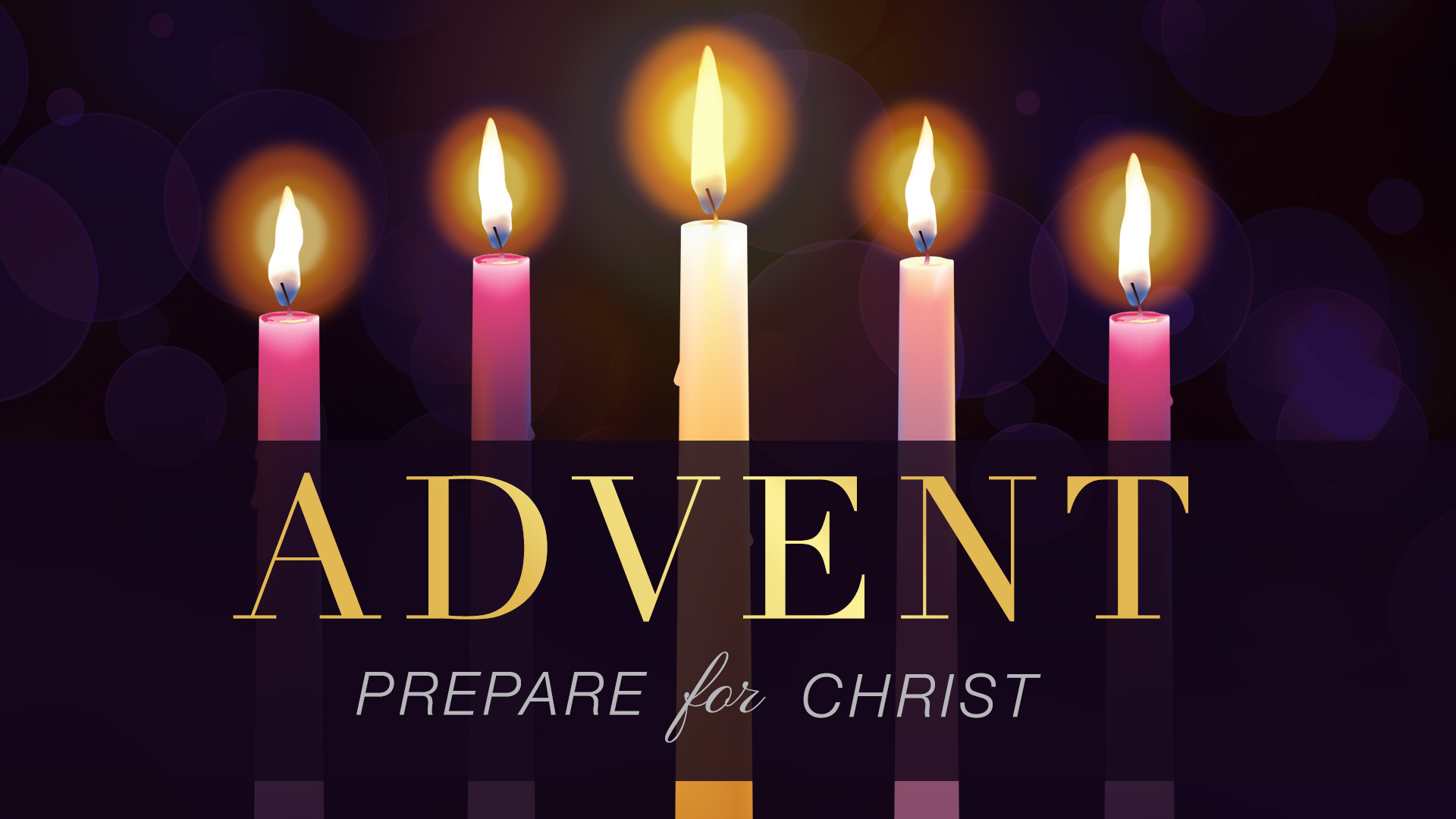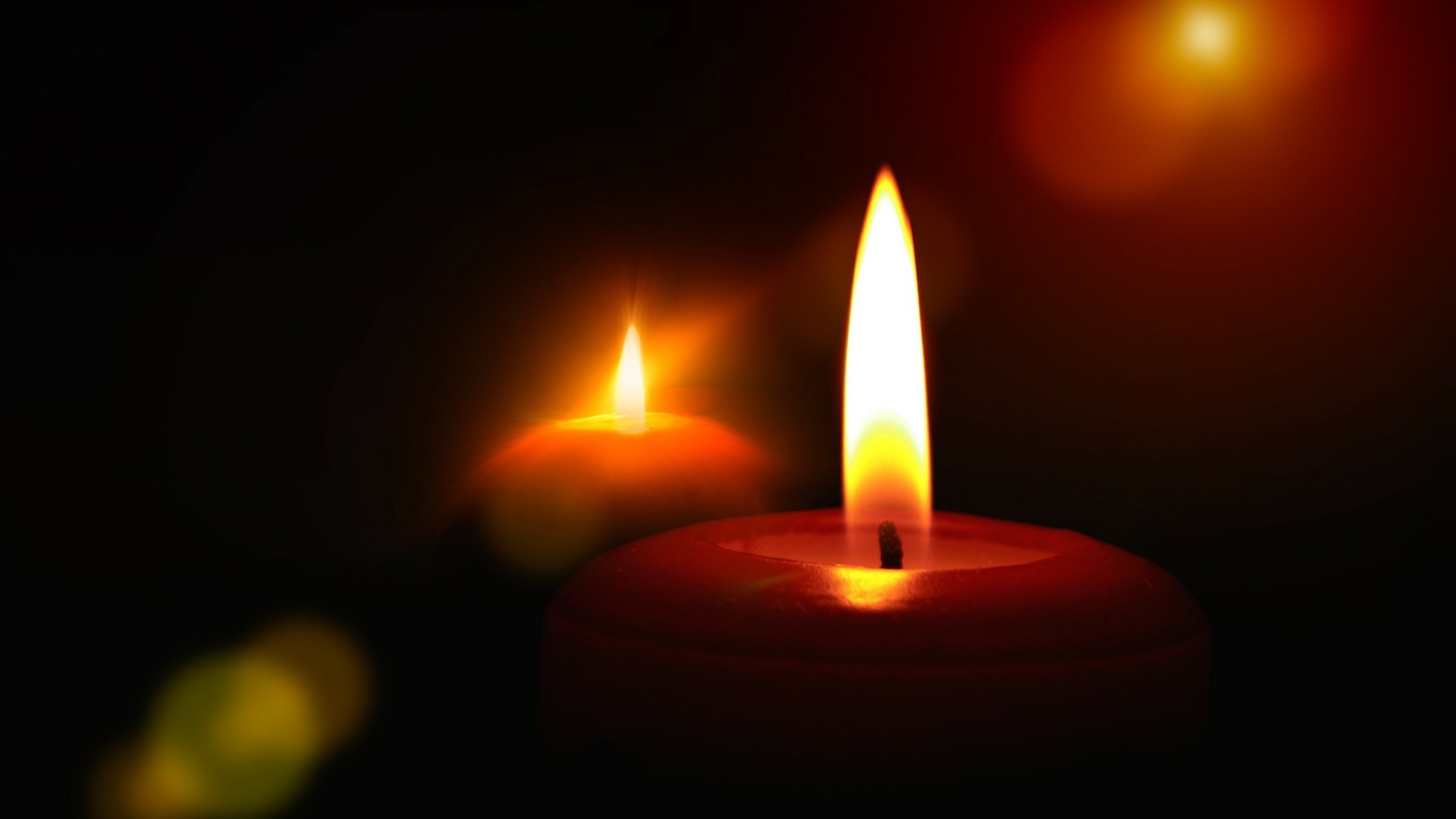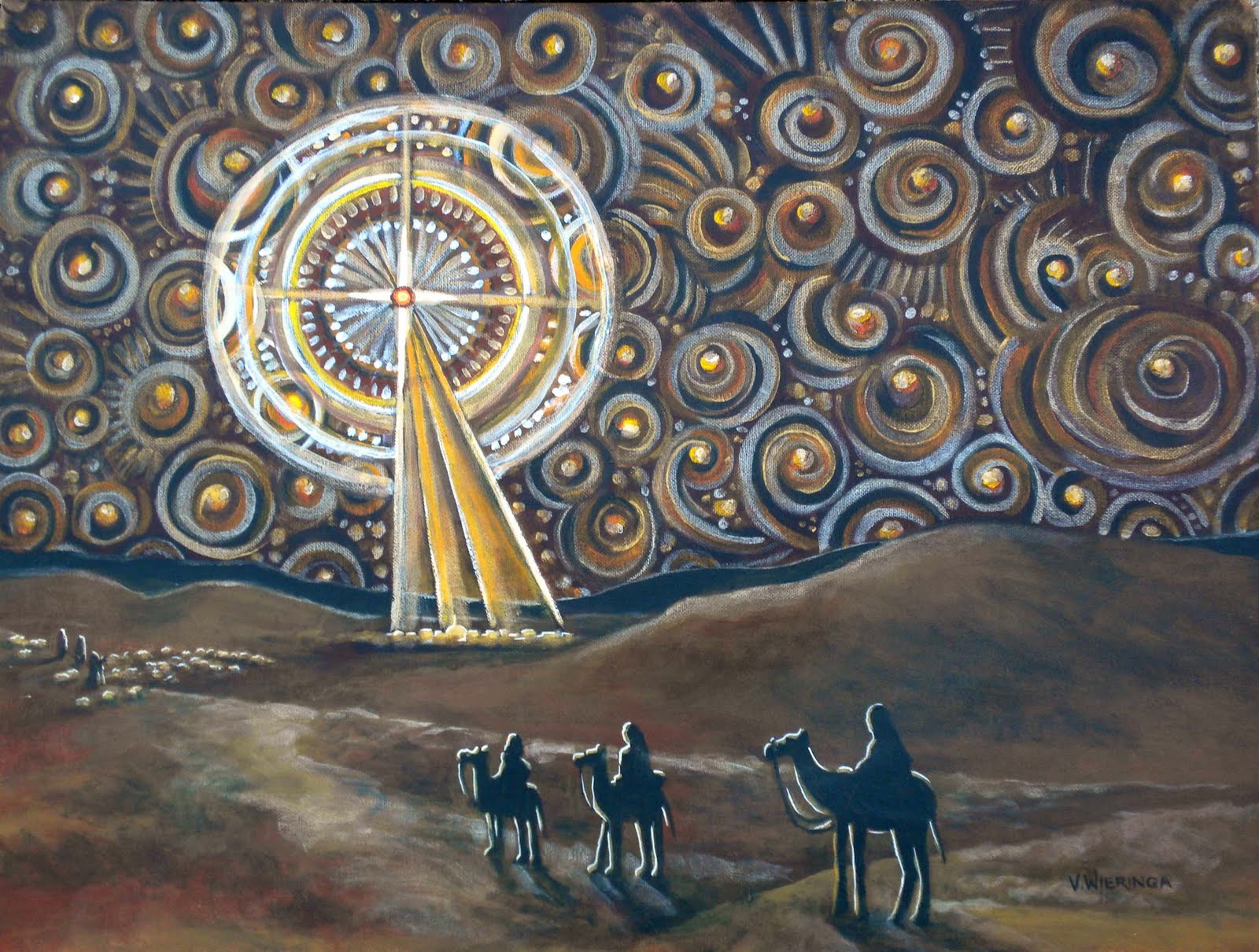I was interviewed this week for Deacon Doug McManaman’s new show, Podcasts for the Religious. It was a lot of fun to see Deacon Doug again. Aside from his great diaconal work, Doug taught philosophy to high school students for many years (no easy task, that), and has written extensively on Catholic education. On the show, we talked about all sorts of things surrounding Advent — how the Dead Sea Scrolls prove that Jesus indeed claimed to be the Messiah, the surprisingly deep meaning of the opening verse of Mark’s Gospel, and even a fun (although perhaps apocryphal) story about Queen Victoria! You can check out the full episode here, or subscribe (as you really should) to Deacon Doug’s show on Apple Podcasts, or wherever fine podcasts are downloaded!
Posts

The Catechism of the Catholic Church says this:
“(W)hen the Church celebrates the liturgy of Advent each year, she makes present this ancient expectancy of the Messiah, for by sharing in the long preparation for the Saviour’s first coming, the faithful renew their ardent desire for his second coming. By celebrating (John the Baptist’s) birth and martyrdom, the Church unites herself to his desire: He must increase, but I must decrease” (CCC 524).
“He (Jesus) must increase, but I must decrease”. He must become greater, and I must become less. This statement of John the Baptist’s can easily be appropriated by us as we seek to stamp out our own selfishness and self-centredness this Advent.
Let’s really make an effort to make Advent and Christmas truly about our Lord this year – and what he wants for us, as opposed to what we might “get” this Christmas. And what he wants for us is holiness, which will in turn make us much happier (not to mention the people who have to live with us)! However, we need to battle the culture around us to do that – a culture that seeks to pull us farther and farther from Jesus and the true meaning of these sacred seasons.
Michaelann Martin says, “Either we live the liturgical year with its varying seasons of joy and sorrow, work and rest, or we follow the pattern of the world, writes Helen McLoughlin in ‘Advent and Christmas in a Catholic Home’, commenting on the challenge Catholics have of being in the world, but not of the world, throughout the year. She wrote these profound words in the 1950s, but they are even more important today because of the general decline in Catholic family life during the last 40 years. With two parents working in many households, there is less time to devote to the spiritual life of the family. As Catholic parents, we must readjust our priorities and teach our children by living our faith, both inside and outside the home.”
In other words, we have to be intentional about creating a Catholic culture in our own homes and families, or else we will be swept along by secularism, almost by default. We don’t want to become “Catholics in name only” (CINOs), so here are some ideas for creating family Advent traditions:
Children love to anticipate. In our family creche (manger) scene, we can make sure that we don’t place the Christ child in the manger until Christmas arrives. We can also have our own Advent wreaths and candles that are lit at mealtime, or during the family rosary.
Another highlight of Advent is the opportunity to teach children about the real St. Nicholas, whose feast we celebrated on Dec. 6. Santa Claus is, of course, based on St. Nicholas, but commercialism has obscured the historical figure of the saint, whose story is fascinating and can be taught to one’s children.
These are just some ideas – you can also create your own unique Catholic traditions within your family. The seasons of Advent and Christmas, lived well, make a deep impression on children that can last a lifetime.
What are your most cherished Advent and Christmas family traditions? Share this post on social media and let others know how your faith impacts your own family celebrations.

On this Second Sunday of Advent, we encounter the figure of John the Baptist in the Gospel reading (Matthew 3:1-12):
John the Baptist appeared, preaching in the desert of Judea
and saying, “Repent, for the kingdom of heaven is at hand!”
It was of him that the prophet Isaiah had spoken when he said:
A voice of one crying out in the desert,
Prepare the way of the Lord,
make straight his paths.
John wore clothing made of camel’s hair
and had a leather belt around his waist.
His food was locusts and wild honey.
At that time Jerusalem, all Judea,
and the whole region around the Jordan
were going out to him
and were being baptized by him in the Jordan River
as they acknowledged their sins.
When he saw many of the Pharisees and Sadducees
coming to his baptism, he said to them, “You brood of vipers!
Who warned you to flee from the coming wrath?
Produce good fruit as evidence of your repentance.
And do not presume to say to yourselves,
‘We have Abraham as our father.’
For I tell you,
God can raise up children to Abraham from these stones.
Even now the ax lies at the root of the trees.
Therefore every tree that does not bear good fruit
will be cut down and thrown into the fire.
I am baptizing you with water, for repentance,
but the one who is coming after me is mightier than I.
I am not worthy to carry his sandals.
He will baptize you with the Holy Spirit and fire.
His winnowing fan is in his hand.
He will clear his threshing floor
and gather his wheat into his barn,
but the chaff he will burn with unquenchable fire.”
John is dripping with not only honey, but with Old Testament motifs. He’s really the last prophet of the Old Covenant, bridging it with the New Covenant (Testament) of Jesus Christ. He is Elijah redux, to be sure, but I want to focus here on a somewhat overlooked section of John’s speech: “And do not presume to say to yourselves, ‘We have Abraham as our father.’ For I tell you, God can raise up children to Abraham from these stones” (Matt 3:9). What stones? And what do they mean?
Near the location where John was speaking, Joshua had set up twelve stones by the Jordan River as a memorial of God’s deliverance of the twelve tribes (Joshua 4). The twelve stones reappear in the time of Elijah, who built an altar with them (1 Kings 18:31-32). When one recalls Jesus’ identification of John with Elijah (Mark 9:13), and John’s own adaptation of Elijah’s very dress, this is instructive. As Elijah once did, John is calling Israel’s twelve tribes to repent, and prepare for the coming of Israel’s Messiah.
There is also a wordplay in effect: the Hebrew word for “stone” (eben) sounds like the Hebrew term for “son” (ben). John is essentially saying that God can obtain new children of his own from elsewhere; Israelites who remain unrepentant and faithless can’t rely on their pedigree alone for salvation; they must repent and become obedient to the teaching of the coming Anointed One.
Today’s Catholics also can’t rely on their baptism alone, their membership in the Church (the new Israel), as a “golden ticket” for salvation. One must ratify one’s baptism by remaining in friendship with God, obedient to Jesus Messiah. Advent offers us a wonderful chance to repent if we haven’t always done so. We must prepare for not only Christmas, the feast of Jesus’ first arrival, but the coming Parousia, Christ’s Second Advent, inexorably approaching.

This Sunday is the Church’s “New Year’s Day”, as it were. It’s not only the first Sunday of Advent, but also the beginning of a new liturgical year in the Church. It’s a great time to start over, start fresh, and try to live our faith better. So, as we make our Catholic “New Year’s resolutions” about how to live Advent well, we need to keep some important points in mind:
The first thing we need to remember is that the season of Advent is not the season of Christmas! This is very difficult for us to do, because our culture has completely forgotten this truth. The culture at large wants to either A) eliminate all religious references to the season at all – for example, calling it simply the “Holiday Season”, or B) celebrating Christmas prematurely, within the season of Advent.
In the first case (A), cultural relativism – with a particularly virulent hatred for Christianity – seeks to eliminate all references to the divine at this time of year. But we really can’t escape the truth. Even the word “holiday” actually means “holy day”.
However, for Catholics, the second problem (B) is much more of a temptation. It has become quite common for people to “pull back” the feast of Christmas into Advent. The Church teaches us that Advent is actually (much like Lent) a season of penitential preparation for the great Feast of Christmas. This is one reason why many dioceses have an annual “Advent Confessions Day”, just as in Lent. This is also why Mass readings during Advent focus on the Second Coming of Christ and the Great Judgment – we need to put our lives in order and be ready to meet the great King.
The Church even encourages fasting during Advent. Without a fast, there can be no feast at Christmas. Other penances, like prayer and giving to the needy, get us spiritually ready for Christmas (cf. CCC 1434).
In stark contrast, cultural practices like office Christmas parties and other festive gatherings prior to Christmas encourage sumptuous feasting – and tragically, in so many cases, dissolute and downright dreadful debauchery. One should take to heart the words of Saint Paul from this Sunday’s second reading:
Brothers and sisters: You know the time; it is the hour now for you to awake from sleep. For our salvation is nearer now than when we first believed; the night is advanced, the day is at hand. Let us then throw off the works of darkness and put on the armor of light;
let us conduct ourselves properly as in the day, not in orgies and drunkenness, not in promiscuity and lust, not in rivalry and jealousy. But put on the Lord Jesus Christ, and make no provision for the desires of the sinful nature (Romans 13:11-14).
Prayer, penance, and preparation. That’s the recipe for living Advent well. The great Feast of Christmas will be all the sweeter for us as a result.

We are now in Advent, preparing to celebrate the birth of Jesus at Christmas. Many modern secularists find it very difficult to believe in the possibility of miracles, such as the virginal conception of Jesus. They say that the ancients were quite gullible to believe this, and that modern humanity is far too “educated and enlightened” to fall for such “nonsense”. How can we respond to this?
At one level, this is nothing more than chronological snobbery. In a recent article, RZIM apologist Jill Carattini responds to this fallacious line of reasoning:
In his 1945 essay “Religion and Science,” C.S. Lewis exposed one of the most common false assumptions at the heart of the science/faith divide, particularly as it pertains to the nativity of Jesus. The assumption is that this “primitive” nativity was likewise filled with primitive thinkers devoid of any sort of knowledge of biology or natural reasoning. Here and elsewhere, Lewis saw that we hold our scientific advancements as something like demerits for prior generations, perpetuating the mentality that the only accurate thought is current thought, the only mind worth trusting is an enlightened one—of which I am conveniently a member.
The disciples…knew enough about the laws of physics to be completely terrified by the man walking on the water toward their boat. The crowd of mourners knew enough about death to laugh at Jesus when he insisted that the dead girl was only sleeping, and to walk away astonished when she came back to life. There were also the magi, astrologers who followed their scientific calculations to the child, Philip and Andrew who knew that the mathematics of two fish and a starving crowd were not going to divide well, Mary and Martha who knew that their brother’s death was the last word, and Thomas who knew the same after he watched Jesus crucified.
In each of these objections, I thankfully hear my own. So much so, that it would appear faith is not a turning of one’s back on the fixed laws of nature or physics or mathematics, but rather, a recognition in the very face of these laws we know and trust that something from outside the law must have reached into the picture. I find each of these scenes both remarkable and reasonable precisely because of the reactions of men and women with a grasp of natural law and the same objections that any of us would have offered had we been present. It would be blind faith indeed if we were receiving a story that wanted us at the onset to fully reject the laws of natural reasoning in replacement of something else. What we receive instead is a story filled with undeniable indications which suggest that something—or Someone—has startlingly stepped into the picture.
 Q. Can you tell us about the significance of this Sunday’s Gospel reading?
Q. Can you tell us about the significance of this Sunday’s Gospel reading?
A. For this Second Sunday in Advent, the Gospel reading is from Chapter 1 of Mark’s Gospel. Mark does not have an infancy narrative in his Gospel, but rather, gets right into the action of Jesus’ public ministry. His incipit (introductory statement) is as follows: “The beginning of the gospel of Jesus Christ, the Son of God” (Mark 1:1). This may seem like a very basic declaration to us, as we read Mark approximately 2000 years after it was written. But, make no mistake, with this one line, Mark has instantly captured the attention of the entire world, Jew and Gentile alike.
Q. How is this so?
A. For the Jewish reader, Mark has declared Jesus to be the long-awaited Messiah. The word “Christ” is not Jesus’ last name! It is the English translation of the Greek word Christos, which in turn is a translation of the Hebrew word Meschiach (“Messiah”).
The Gentile world would have been arrested in particular by the statement that Jesus is “the Son of God”. The Roman Emperors were called “God”, “Son of God”, “God from God”, and “Universal Savior of Human Life”, among other exalted titles. Their victories were hailed as “Good News” throughout the Empire. We know this from archaeological inscriptions that have been uncovered in Roman cities. These were displayed publicly because they were things that citizens of the Empire were expected to know and believe.
Q. Is there, then, special significance to the Roman centurion’s confession of faith in Mark 15?
A. You are quite right, and this links Jesus’ Passion back to Mark’s incipit. When the centurion, assisting in Jesus’ crucifixion, witnesses the manner in which he dies and the portents that surround it, he is overwhelmed. He exclaims, “Truly this man was the Son of God!” (Mark 15:39, emphasis mine).
The most powerful person in the world was the Emperor of Rome, the Caesar. The most powerless person in the world was a victim of crucifixion. Beaten, scourged, naked – utterly forsaken. Crucifixion was so horrific that it was illegal for Roman citizens to be executed in this manner. Jesus, as a Galilean Jew, was afforded no such courtesy.
But the centurion was given an amazing grace. He recognized that his boss, the Emperor, on his Roman throne, was not the “Universal Savior of Human Life” and the “Son of God”. The seemingly powerless Jesus, on the “throne” of his cross, truly was. The centurion changes his allegiance from Tiberias to Jesus, and places all of his hope in the Lord. Mark invites his readers, and you and me, to do the same.

